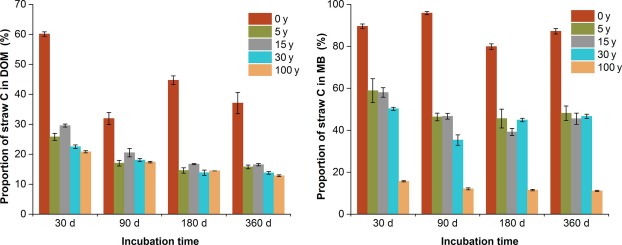Chen XF, Liu M, Y. Kuzyakov, Li WT, Liu J, Jiang CY, Wu M, Li ZP. Incorporation of rice straw carbon into dissolved organic matter and microbial biomass along a 100-year paddy soil chronosequence. Applied Soil Ecology, doi: 10.1016/j.apsoil.2018.06.004
Abstract
Dissolved organic matter (DOM) and microbial biomass (MB) are small but reactive pools of soil organic matter (SOM). The incorporation of carbon (C) from rice residue into DOM and MB in paddy soils under aerobic condition when rice straw remains in the field is poorly understood. A one-year incubation experiment was conducted, in which 13C-labelled rice straw was added to a cultivation chronosequence of paddy soils ranging from 0 to 100 years. Rice straw was rapidly decomposed during the first 30 days, after which 73% of the added straw C, on average, was retained in the soil and 46% of the straw C remained in the soil after one year. Throughout the entire incubation period, 0.2–0.9% of the added straw C was incorporated into DOM, and 2–5% was recovered in MB. The paddy cultivation age strongly affected the straw contribution to the organic C pools. In barren land (0 year), 32–60% of the DOM was derived from straw C, while 13–30% of the DOM was derived from straw C in 5–100-year paddy soils. On average, straw C contributed to 88% of the MB in barren land, 50% in 5-year soil, and 13% in 100-year soil. Consequently, over the duration of paddy cultivation, the contribution of rice straw C to the MB decreased, while the contribution of SOM increased. Our study has indicated that DOM in paddy soils mainly originates from SOM rather than from added plant residues but that plant residues are an important C source for microorganisms.








